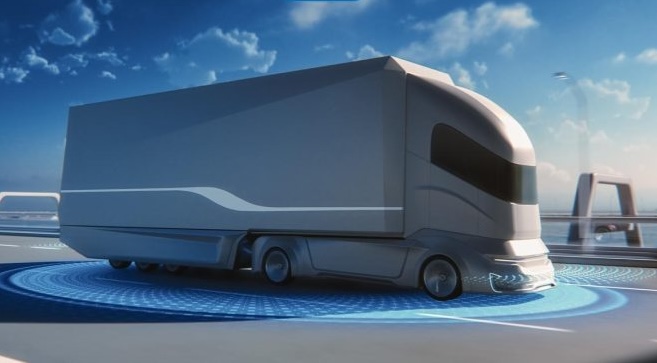
The future of logistics is here, and it’s arriving on four wheels. Self-driving trucks are revolutionizing the way goods are transported, promising to change the face of the industry as we know it. These autonomous vehicles are not just a far-fetched concept anymore; they are already making their mark in freight yards and warehouses across the world. In this blog post, we will delve into the dawn of self-driving trucks and explore how these remarkable advancements in technology are reshaping the landscape of logistics. Join us as we embark on an exciting journey through automation, innovation, and endless possibilities!
Robotic trucks may face an uphill climb on public roads, but automation is claiming a place in freight yards and warehouses
Robotic trucks may face significant challenges when it comes to navigating public roads. The complexities of traffic patterns, unpredictable human behavior, and the need for advanced safety measures make it a difficult terrain for autonomous vehicles to conquer. However, while the open road might present obstacles for self-driving trucks, automation is finding its rightful place in freight yards and warehouses.
In these controlled environments, where operations are streamlined and infrastructure is designed with automation in mind, robotic trucks can thrive. With carefully mapped routes and designated areas for loading/unloading, the risk factors that exist on public roads are minimized.
Freight yards provide an ideal setting for autonomous vehicles to showcase their capabilities. These expansive spaces allow robotic trucks to operate efficiently without the constraints of congested city streets or complex intersections. They can navigate through rows of containers or shelves with precision and accuracy, optimizing logistics processes like never before.
Warehouses also benefit greatly from automation integration. Robotic trucks can seamlessly transport goods within warehouse facilities, eliminating manual labor required for moving heavy loads across long distances. This not only enhances operational efficiency but also reduces the risk of physical strain injuries among workers.
While there may still be some hurdles to overcome before we see widespread adoption of self-driving trucks on public roads, there is no denying that automation has found its place in freight yards and warehouses. As technology continues to advance and regulations catch up with innovation, we can expect even greater integration of robotics in logistics operations – leading us into an exciting future where efficiency knows no bounds!
Solutions
The rise of self-driving trucks has brought about a need for innovative solutions in the logistics industry. As autonomous vehicles continue to reshape the way goods are transported, companies are seeking ways to adapt and optimize their operations.
One solution that is gaining traction is the use of automated vehicles in warehouses. By implementing robotic systems, companies can streamline their inventory management processes and improve efficiency. These automated vehicles can navigate through aisles, pick up and transport items with precision, reducing human error and increasing productivity.
Another solution being explored is the concept of autonomous truck platoons. This involves a group of trucks traveling closely together, controlled by a lead vehicle. By using advanced communication technology and sensors, these platoons can synchronize their movements, reducing fuel consumption and optimizing traffic flow on highways.
Mobile delivery hubs are also emerging as a potential solution for last-mile deliveries. These hubs act as centralized distribution points where packages are transferred from large carrier vehicles to smaller autonomous robots or drones for final delivery. This approach enables faster and more efficient deliveries while minimizing congestion in urban areas.
In conclusion,
As self-driving trucks become more prevalent in the logistics industry, finding effective solutions will be crucial for businesses to thrive in this new era of transportation. From warehouse automation to platooning and mobile delivery hubs, there are numerous possibilities for optimizing operations and improving efficiency. It will be interesting to see how these solutions evolve over time as technology continues to advance.
Ecosystem
When it comes to the world of autonomous vehicles, building a robust ecosystem is essential. It involves creating an interconnected network of technologies, infrastructure, and regulations that work seamlessly together to support the operation of self-driving trucks in the logistics industry.
At its core, the ecosystem for autonomous vehicles includes various stakeholders such as manufacturers, software developers, telecommunications companies, regulators, and even insurance providers. Each player has a unique role to play in ensuring the successful implementation of self-driving technology on our roads.
Manufacturers are responsible for designing and building reliable autonomous truck systems that can handle different terrains and weather conditions. Software developers develop cutting-edge algorithms and artificial intelligence capabilities that enable these vehicles to navigate complex roadways with minimal human intervention.
Telecommunications companies play a crucial role by providing high-speed connectivity through 5G networks. This allows real-time communication between autonomous trucks and other vehicles on the road, making transportation more efficient and safe.
Regulators are tasked with creating policies and standards that govern how self-driving trucks operate on public roads. They must ensure safety measures are in place while also encouraging innovation in this rapidly evolving field.
Insurance providers have their part to play too by developing new insurance models tailored specifically for autonomous vehicle operations. This ensures that there is adequate coverage for potential accidents or incidents involving self-driving trucks while also managing risk effectively.
In addition to these key players, infrastructure development is another vital aspect of building an effective ecosystem for autonomous vehicles. Dedicated lanes or smart highways equipped with sensors can help optimize traffic flow and provide additional safety measures specifically designed for self-driving trucks.
Creating a comprehensive ecosystem is crucial not only for the success but also widespread adoption of self-driving trucks in logistics. Collaboration among all stakeholders will be paramount as they work towards addressing challenges such as cybersecurity risks, ethical considerations around decision-making algorithms,and public acceptance of this transformative technology.
Together we can build an inclusive environment where autonomy meets efficiency – revolutionizing logistics and changing the way goods are transported in our increasingly interconnected world.



Leave a Reply